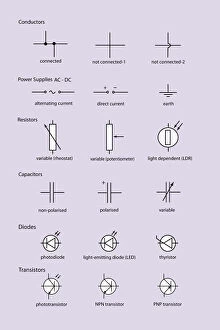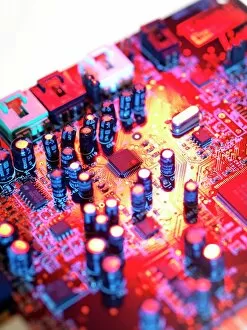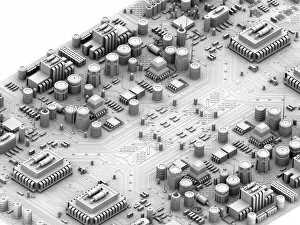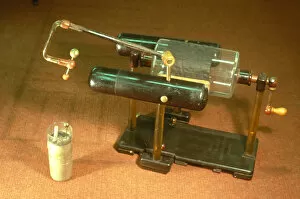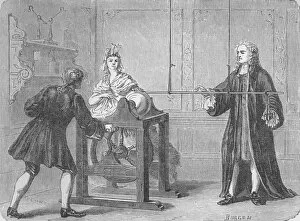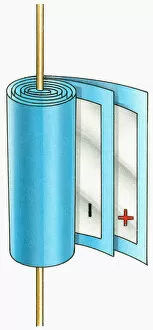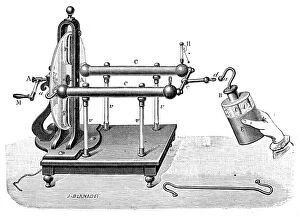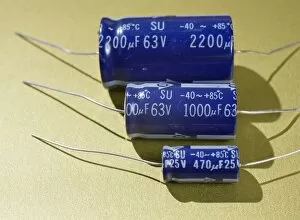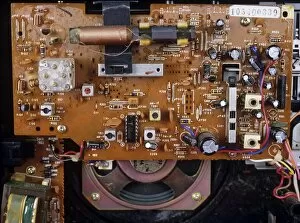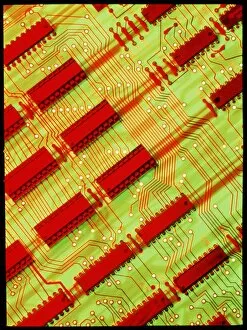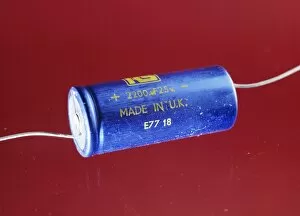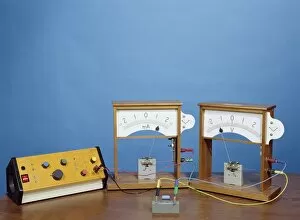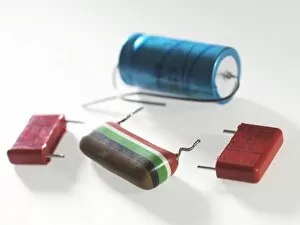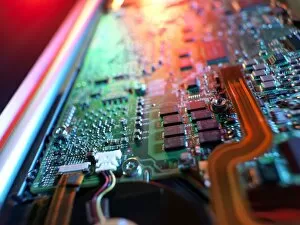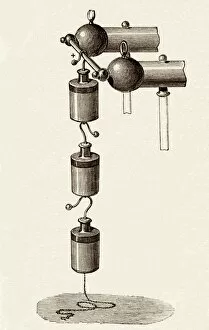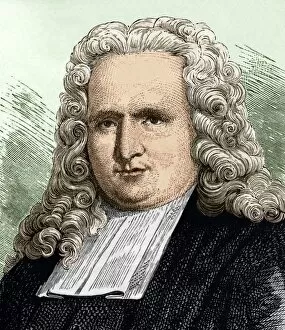Capacitor Collection
A capacitor, represented by standard electrical circuit symbols, is an essential component of any circuit board
For sale as Licensed Images
Choose your image, Select your licence and Download the media
A capacitor, represented by standard electrical circuit symbols, is an essential component of any circuit board. Its role in storing and releasing electrical energy makes it a crucial element in various electronic devices. Just like the intricate artwork on a circuit board they can intricately designed to optimize their performance. The history of capacitors dates back centuries, with the Leyden jar being one of the earliest examples. This mahogany, brass, and glass cylinder electrostatic machine was used to charge the Leyden jar in 1833-39 as depicted in a beautifully colored engraving from that era. The discovery of the Leyden Jar itself took place even earlier in 1745. In modern times, they can be found on computer motherboards among other components. Their presence ensures stable power supply and prevents sudden voltage fluctuations that could damage sensitive electronics. As seen through standard electrical circuit symbols, these small but mighty devices play a significant role in maintaining smooth operations within our technological world. Illustrations showcasing capacitors provide insight into their internal structure and how they function within circuits. These illustrations also highlight their importance when integrated into systems such as crystal sets from the 1920s or charging a Leyden jar using Ramsden electrostatic generators. As technology advances further into our digital age, cities are becoming hubs for complex circuits powering computers and other electronic devices. Computer artwork depicting futuristic "circuit cities" reminds us of how integral they are to keep these interconnected networks running smoothly. From ancient discoveries to cutting-edge technology, capacitors remain an indispensable part of our electrified world.

